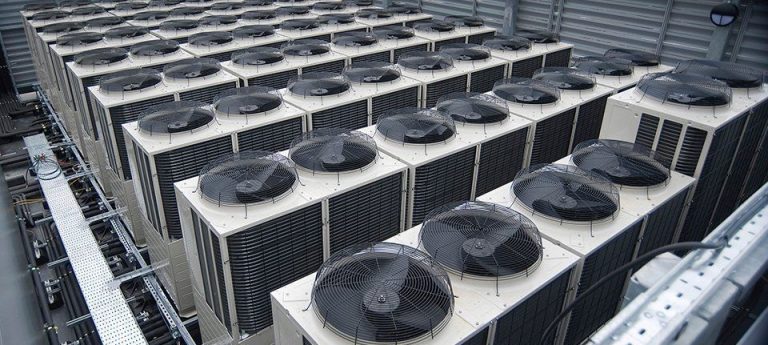HVAC is an acronym for heaters, ventilation, and air conditioning. HVAC aims at providing comfortable warmth and quality air circulation in the house. The advancement in technology has led to smart HVAC, which is easy and convenient to operate at homes. An example of HVAC is the smart furnace, a heating system that regulates the home’s temperature through the use of a digital thermostat. For instance, during the winter season, the furnace heats the house to provide an optimal temperature that makes the home comfortable to stay in throughout. The digital thermostat ensures that no energy is wasted.
Smile HVAC provides repair, service, and installation of any HVAC equipment, including furnace, air conditioner, water heater, humidifier, water treatment systems, and more. Nonetheless, this article highlights the pros and cons of installing an HVAC system in your home.
Pros of HVAC System
Reduces Electricity BillsAn ordinary HVAC system consumes higher energy compared to a smart HVAC system. As a result, switching to a digital HVAC system will help you save energy consumed at your home every month. The energy bills will reduce and enable you to save money for other purposes. The ongoing COVID-19 pandemic has reduced the household disposable income due to financial difficulties like loss of jobs. As a result, a smart HVAC system will enable you to use little cash to pay for the home. Research shows that an energy-efficient system can reduce your electricity bills by 18%. It can also give you a more comfortable temperature and air quality compared to the traditional HVAC system. Moreover, it decreases carbon emissions and makes your home environmentally friendly.
Improved Temperature Variability
Valery Chaly, the main technician of “Furnace Repair in Newmarket” argues that a digital HVAC system will come with smart tactics for controlling the heating system at your home. For instance, it will enable you to cool or heat a specific room without going to that room. You can also know the temperature of every room in the house. As a result, you can even switch off the heating system in the places that are not being while you are cooking in the kitchen!
Provides Cleaner Air
A digital HVAC system offers cleaner air compared to the ordinary HVAC system. Hence, installing smart HVAC assures you of more quality air and decreases stuffiness and drafts in your home. The latest HVAC is also tailored to detect high levels of carbon dioxide in the room. The system responds by pumping fresh air into the house. As a result, the house gets adequate comfort levels.
Remote Access
A smart HVAC system with a wifi-compatible thermostat has been improvised to ensure that you can control it even when you are away from the home compound. When you are headed to your house, you can start warming the rooms a few minutes before you arrive. The system is connected to your smartphones; hence you can also switch off the heaters if you left your home without doing so.
Compatibility
Most of the houses nowadays are connected to voice-activated systems such as Google Home. If you install a smart HVAC, it will connect with other smart machines like Wi-Fi and communicate smoothly. As a result, you can use all of the benefits mentioned earlier, such as controlling the thermostat settings. The entire system’s compatibility can send you emails of maintenance that the smart HVAC needs and potential threats that may occur in the home. You can also get alerts of power blackout when you are away from home. This compatibility creates convenience in the house.
Cons of Smart HVAC
Costly to Install and Maintain
Smart HVAC is thrice more expensive than the ordinary HVAC system. As a result, they are not affordable to all homes. Also, the installation of a smart thermostat requires you to hire a professional HVAC technician. Paying this specialist increases the total cost of installing a smart thermostat. Therefore, all you need is to look for huge funds so that you can purchase and install a smart HVAC system.
Furthermore, the smart HVAC system’s maintenance requires one to hire professional technicians who charge more to the customers. As a result, this turns out to be expensive for the users of the smart HVAC.
Complicated to Use
Smart thermostats take time to understand how to operate it effectively. Some settings are very hard to comprehend and require the involvement of a technician to explain to you. Children and the elderly have a hard time regulating home temperature using a smartphone installed app connected to the entire system. Thus, one has to keep consulting the technicians about some settings and guidelines. This turns out to be time-consuming.
Potential Privacy Risk
Smart thermostat requires you to disclose your data to the manufacturer. They can watch your movements in and out of your house. Not all customers will accept to be sharing their data with the manufacturer. It breaches their privacy. The potential hackers can use this loophole to understand your private life. A stranger can also take your thermostat and use it to control the temperature in your home.
Return on Investment Takes a Long Time
Yes, you will be saving energy bills every month, but on the other side, the money used to install a smart thermostat is huge, and it takes a long period to pay back the initial investment. Hence, at some point, smart HVAC can be termed as a luxury.
In conclusion, installing smart HVAC is very beneficial to your home because of the digital thermostat that can be remotely accessed to regulate temperature. As a result, this gives a higher advantage of saving energy bills from your home. The system also provides cleaner air than the ordinary HVAC system, which creates comfort in the house. However, it would be best if you were prepared to meet the high cost of installing a smart HVAC system.

0 Comments